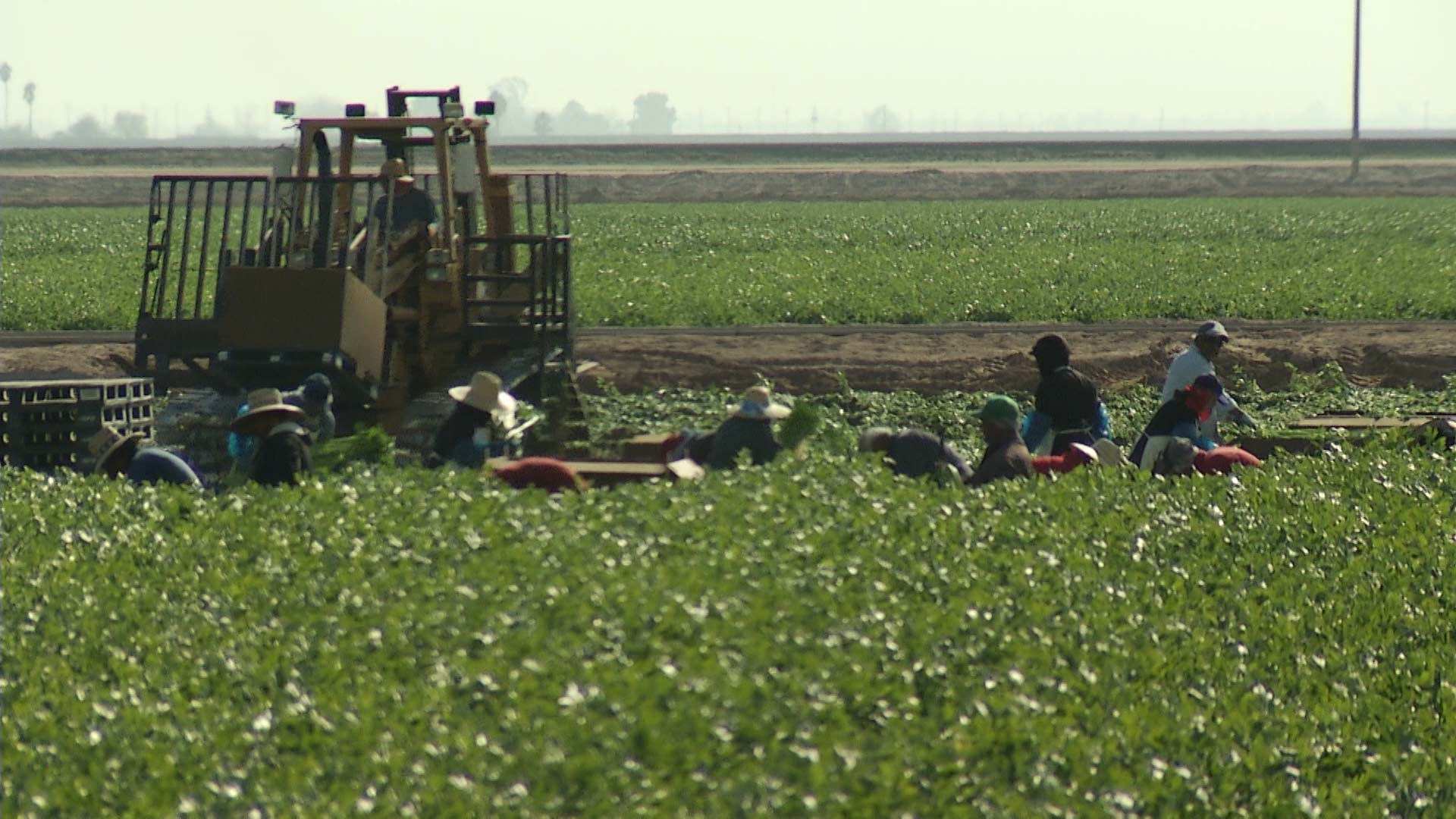 Workers harvest greens alongside farm equipment in the Yuma area in this file photo.
Workers harvest greens alongside farm equipment in the Yuma area in this file photo.Arizona is seeing more COVID-19 cases statewide, but two small counties along the US-Mexico border are seeing particularly troubling trends.
In the last month, Santa Cruz county has reported over 1,500 new cases and Yuma County has reported more than 3,000. That’s a stark change from numbers those areas have seen in the past — Santa Cruz County had just 69 cases when Gov. Ducey lifted the stay at home order on May 15. Yuma County had 310.
Gary Nabhan, an agricultural ecologist and a research social scientist at the University of Arizona, said these are agricultural hubs for the state and the country. Produce is harvested in farmland near Yuma and it's packed and delivered through the border in Nogales.
Nabhan said both areas are staffed with essential workers who don’t have the chance to stay home when sick.
"Whether they’re packing the produce in Nogales or picking it in Yuma county, they are essential workers whose health care we’ve neglected," he said.
Nabhan said border communities have inadequate access to health care and the workers are highly-mobile and already susceptible to respiratory illnesses.
Gail Emrick is a public health expert and the executive director of the Southeast Arizona Area Health Education Center in Nogales. She said the rise in cases is somewhat expected because health trends — good and bad — usually appear in cities first.
"We kind of knew that a wave in rural communities would happen after major cities," she said.
Emerick said that workers in both produce picking and packing areas make frequent transborder trips. And the rise in cases seen in Arizona are mirrored in Sonoran border towns, meaning communities on both sides are vulnerable.
"Farmworkers are going to have much less likely access to health care, treatment and testing," she said.
She said a similar trend is emerging in Cochise County. The border-hugging county in southeast Arizona was reporting very few cases throughout the pandemic. By May 15, the Arizona Department of Health Services had reported just 45 COVID-19 cases and one death from the disease. As of June 17, the county has recorded 248 cases and five deaths.
Emerick said those numbers could continue to rise if more isn't done to curb contagion and trace the virus at large farms along the border. She said best way to get a handle on the rise is to work with farms and local health clinics to increase testing, make sure workers are cared for when sick and establish robust social distancing guidelines.

By submitting your comments, you hereby give AZPM the right to post your comments and potentially use them in any other form of media operated by this institution.